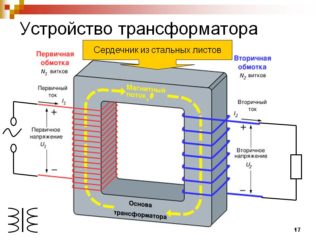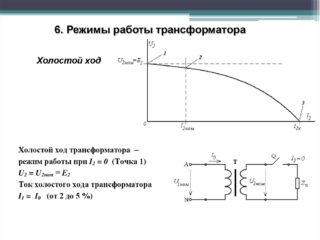The voltage of 220 volts in the electrical network in the form in which it enters the apartment is unsuitable for the operation of most electronic devices. To bring it to a convenient type for powering household appliances, special converters, called transformers, are required. With their help, it is possible to lower the value of the supply voltage to the desired value, and then rectify it.
General information about transformers
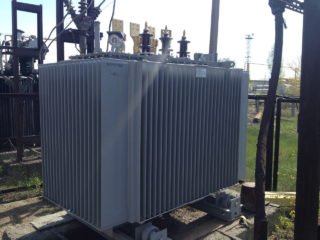
As converters, these devices are traditionally used to bring the power transmitted over high-voltage lines to an acceptable form. For "transfer" over huge distances, only ultra-high voltages are suitable, at which the current can be of an acceptable magnitude.
If you try to transmit energy for at least a hundred kilometers in the form of the usual voltage of 380 Volts, a current of millions of Amperes will be required to deliver the required power to the consumer.
To dissipate it, you need a wire about the thickness of a human body, which in practice is impossible to implement. Therefore, on the electricity-generating side, with the help of another (step-up) transformer, its value rises to 110 kV. In this form, it is impossible to use the electricity distribution for residential buildings and production facilities. Therefore, after delivery via explosives in distribution stations, 110 kV are reduced to 10 (6) kV.
From here they go to the regional transformer substations, where in the local step-down transformer they acquire their final form of 380 (220) Volts. With such potential values, energy can be easily transported through an underground cable or an overhead self-supporting insulated wire to the end consumer. Therefore, a single-phase transformer plays an important role in human life.
Purpose and device
An acquaintance with the design of the transformer, which consists of the following main elements, will help to gain a more complete idea:
- ferromagnetic core;
- primary and secondary coil located on an insulated frame;
- protective cover (this element is not available on some models).
In some samples, electrical steel or permalloy are used instead of ferromagnets. The choice of a particular type of core material depends on the area of use of the product itself.
Operating principle
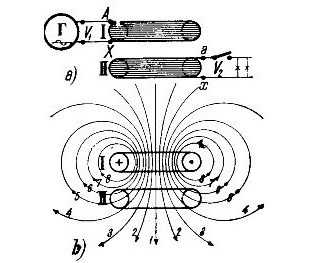
The principle of operation of a single-phase transformer is based on the law, according to which an alternating e / m field acting in a loop induces an EMF in a nearby conductor. The phenomenon is called Faraday's law of electromagnetic induction, who was the first to discover this interesting effect. To substantiate it, the scientist developed a whole theory, which formed the basis for the operation of most modern electrical devices and assemblies.
Its main provisions:
- when current passes through a loop of wire, a magnetic flux is formed around it, capturing all the same loops located nearby;
- under the influence of this flow, an EMF is induced in them, which in the form of changes coincides with the original field;
- in the presence of a ferromagnet in it, the effect of this effect is enhanced.
All these principles are the basis for the operation of a modern transformer product. When connected to the secondary winding of the load, the working circuit is closed, and energy is transferred to the consumer with almost no losses.
Modes of operation
- the so-called "idle";
- load mode.
When idle, the device operates without load and consumes a minimum of power dissipated only in the primary winding. The current in it is also minimal and is usually no more than 3-10% of the value observed with the load connected. In the second case, a current begins to flow in the turns of the secondary winding, the value of which is inversely proportional to the number of turns in the coil.
In a step-down transformer, the voltage is lower and the current is higher. In this mode, power is transferred to the load taking into account the heat dissipation in the transformer core.
Main settings
When considering the parameters of voltage and current converters, it is important to note the transformation ratio k, defined as I1 / I2 = w2 / w1 = 1 / k. Here w2 and w1 are the number of turns in the secondary and primary windings, respectively. In addition, such characteristics as the size of the core window in which the coils are located are taken into account.
Another parameter characterizing the voltage transfer properties of a single-phase two-winding transformer is the same transformation ratio k, the value of which for a step-down device is less than 1. And vice versa, if k> 1, this product is a step-up transformer. In the absence of losses in the wires of the windings and flux dissipation, it is very easy to calculate this indicator. For this, it is most convenient to use a simple calculation algorithm: k = U2 / U1. If there are several secondary windings, the specified parameter should be determined for each of them separately.
Types of transformers and their application
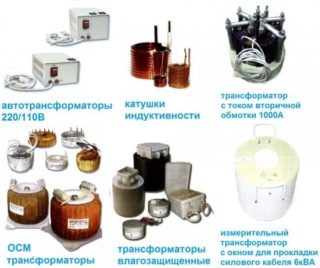
According to the design features of the core, known samples of single-phase transformers are divided into rod, ring and armored products. According to the form of the magnetic circuit used in them, they can be:
- W-shaped;
- Toroidal;
- U-shaped.
Each of these forms is suitable for specific purposes related to the need to obtain the specified transfer characteristics.
According to the value of the maximum achievable magnetic coupling (MC), transformers are divided into products with strong, medium and weak interactions. These characteristics largely depend on the design of the product itself and the type of its core.
A single-phase transformer is in demand in those areas where it is necessary to coordinate two power circuits with electrical isolation of each of them.
Operation of products
When operating single-phase converting devices, special attention is paid to their safe handling, which is explained by the high voltage present in the primary windings. It is also important to consider the following points regarding the rules for installing and including transformers in electrical circuits:
- in order to avoid the failure of the windings (burnout), the secondary circuits should be protected from short-circuit;
- it is important to monitor the thermal conditions of the core and windings and, if necessary, provide for their cooling.
Caring for a single-phase transformer is reduced to standard procedures, which are provided for by the provisions of the current regulations.

